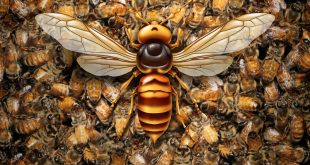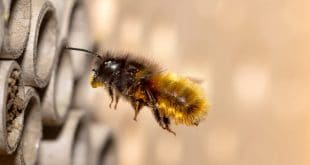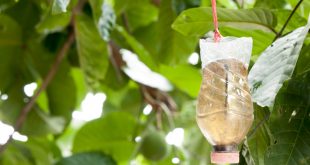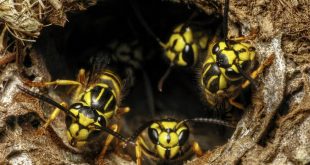Asian giant hornets pose a serious threat to the declining bee population within the United States, and scientists have now raised their concerns. What is particularly surprising is the fact that no one understands how the insect came to the US in the first place. And it is worrying that it might spread to other states. How then do you protect yourself and your honey bees? Read on to find out.
Read More »An Overview of Mason Bee Pests, Parasites and Predators
Discover the challenges faced by mason bees, the unsung heroes of pollination. From ants to bears, parasitic wasps to fungal diseases, these solitary bees encounter a myriad of threats throughout the year. Learn how non-toxic control methods, vigilant nest management, and proper bee house maintenance can help protect these vital pollinators. Join the conversation on safeguarding our mason bees. #MasonBees #Pollinators #Beekeeping #EcoFriendly
Read More »Beehive Mesh – Adding a Mesh to Keep Out Predators
Protect your beehive from predators effectively with our practical guide. Learn how adding a mesh around the hive can safeguard your bees from various threats, ensuring their safety and well-being. This article is essential for beekeepers who want to prevent unwelcome intrusions and maintain a healthy bee colony.
Read More »How to Make a Yellow Jacket Trap: DIY Beekeeping
The traps used to capture and kill yellow jackets can either be bought from the various manufacturers, or you can make a DIY trap at home. DIY yellow jacket traps have a number of advantages over commercially made and sold traps. This article will guide you on how to make a yellow jacket trap of your choice.
Read More »How to Protect Honey Bees from Yellow Jackets
Honey bee pests are a constant problem for many beekeepers. Particularly for new beekeepers, they can be very challenging and heartbreaking. One of these pests that can cause problems to beekeepers is the yellow jacket wasp. If a beekeeper does not identify the pest early, yellow jackets can quickly destroy a thriving honey bee colony. It is imperative for beekeepers to know how to protect honey bees from yellow jackets in order to save them from the stress of dealing with a yellow jacket invasion. Remember that yellow jackets are considered useful in crop agriculture, so focus on controlling the population of yellow jackets only around your apiary.
Read More » BeeKeepClub Resources and Guides for Beekeepers
BeeKeepClub Resources and Guides for Beekeepers





